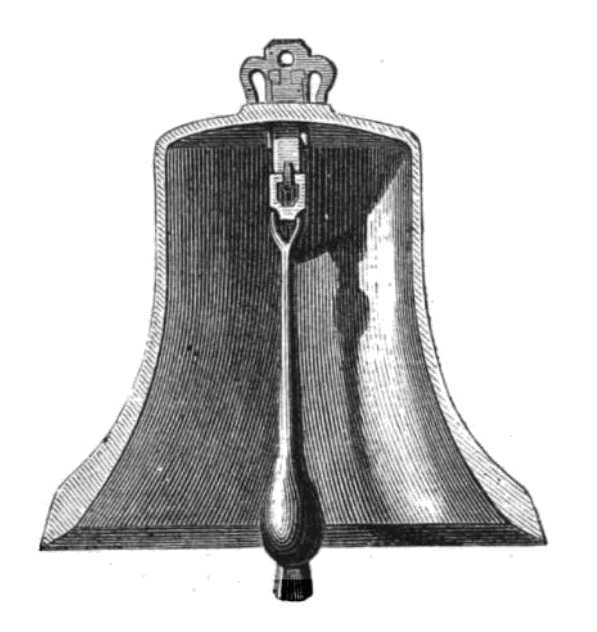|
Bell Ringing at St Peter's Church, Willersey Village and also St Nicholas' Church in Saintbury.
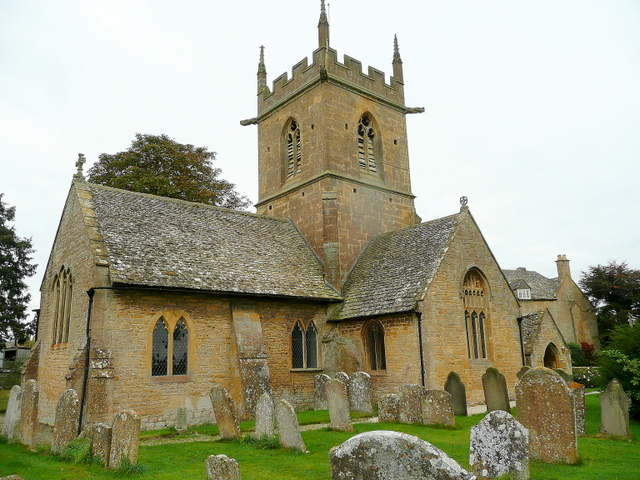
Our Parish Church is beautifully positioned at the end of Church Lane and is surrounded by a
traditional churchyard.
There is a car park at the rear of St Peter's Church, with access from Church Street alongside the Church, opened in January 2018 with generous support from a local charity.
It is for the use of those attending services or functions at the Church and will provide a much needed and long awaited facility. It will always be open for those visiting the Church for
any reason, but not for overnight parking.
Our rector is the The Rev'd Jon Harwood
After covid Willersey bells started ringing again properly once lockdown eased on 21st June 2021 (Government regulations permitting).
You may have heard some of the bells being rung before this date, as the local ringing band started to flex its ringing muscles in readiness for the big day. Some of the bells were rung on the morning of Sunday 6th June 2021. We looked forward to that moment when all 6 bells once again rung out over our village, after an absence of 15 months, in a glorious celebration (we hope) of a return to a better life for us all.
There was a Willersey band quarter peel rung 23rd December 2023, another one in the afternoon and an extended ring on Christmas Eve 2023 after the service. There will be another long ring on New Year's Day.
On New Year's Eve 2023 at 11:30pm we had a 45 minutes ring until the following morning to ring in the New Year 2024. About midnight this was accompanied by fireworks and barking dogs.
Church bells are the largest and loudest musical instruments in the world.
Their sound can be heard miles away from their towers. Bells are rung to call people to Church,
to celebrate happy occasions and commemorate important events. They are also rung simply for
the enjoyment of hearing their sound. Most UK church towers have bells. A set of bells is called a ‘ring’ or a ‘peal’.
Village churches may have a small ring of bells, comprising five or six bells. Larger churches and cathedrals usually have more bells in their ring. Worcester Cathedral as 16 bells. Rudhalls, the bell foundry supplied nearly 5000 bells to chuches in Gloucestershire and elsewhere in the UK. Three churches in Gloucestershire have peals of twelve bells, three have ten and over a hundred like Willersey have six.
The bells in any tower are deliberately not mounted with their bearings in the same direction to reduce any strain on the bell tower when they are being rung.
St Peter's has a famous peal of six bells which are
rung regularly.
As well as being rung on Sunday service days, bell ringing practice is on Thursdays each week from 7:30 to 9:00pm and occasionally on Tuesday afternoons. Bell ringing has been part of Willersey Village life for 300 years.
As there is a midnight mass on Christmas Eve the bells are rung at about 11:00pm that day. The bells may also be rung from time to time by visiting bands of ringers who are most welcome, and also on special occasions.
Three weddings were planned in April 2015 and we marked the 80th birthday of a longstanding ringer. We also took up the challenge of ringing a full peal which
lasted for three hours on Saturday 23rd May 2015 beginning at midday. In Willersey, the regular
sound of church bells continues to be a traditional feature of village life.
Originally there were three large bells but in 1712 they were melted down by Abraham Rudhall and recast into the six beautiful bells we have today. An inscription on the tenor bell reads
‘ring for peace merily’ to celebrate the signing of the Peace of Utrecht.
Church bells are the biggest and loudest musical instruments in the world. Their sound can be heard miles away from their towers. Bells are rung to call people to church,
to celebrate happy occasions and commemorate important events. They are also rung simply for the enjoyment of hearing their sound. Most church towers have bells.
A set of bells is called a ring or a peal. Village churches may have a small ring of bells, comprising five or six bells as in Willersey.
Larger churches and cathedrals usually have a larger ring.
It has been said that there are three typically British activities -
Morris Dancing, Playing Cricket and Church Bell Ringing.
Listen to the sound of St Peter's Bells.
St Peter's bells were rung for the first time since the Coronavirus began on Sunday 12th July 2020.
Because of social distancing we could only ring three bells. The hand bells were also rung to greet the congregation.
Two photographs of Willersey hand bell ringers taken outside Rose Cottage, Church Street. One is from 2021 and the other from 1900. There is a better sexual balance now!
One might say a happy looking bunch of campanologists, who probably weren't used to smiling in front of the camera.
Today, as we still have a very active group of bell ringers in the village - Willersey Hand Bell and Tower Bell Ringers, we decided to retake the scene, outside the same cottage,
and as close to the same positioning as the original.
There is nothing nicer than listening to the tower bells peeling on Thursday evenings, special occasions and on Sunday mornings. It's part of what makes Willersey such a beautiful place to live.
If you are interested in following or joining the group, they meet for practices on Thursday evenings 7.30-9pm at Willersey Church.
The Bell Tower Captain is Robert Chadburn. Email: rchadburn1@gmail.com .
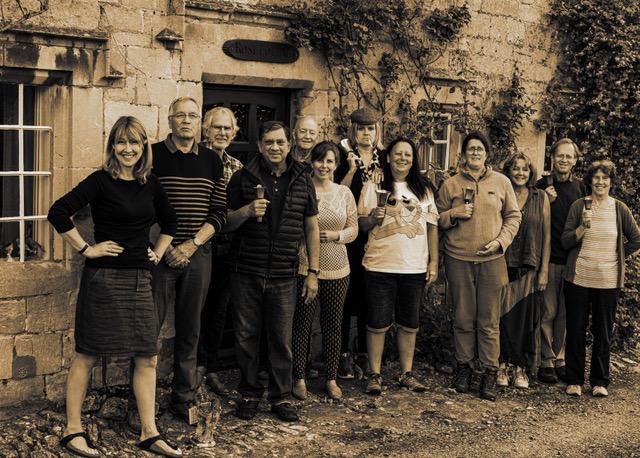
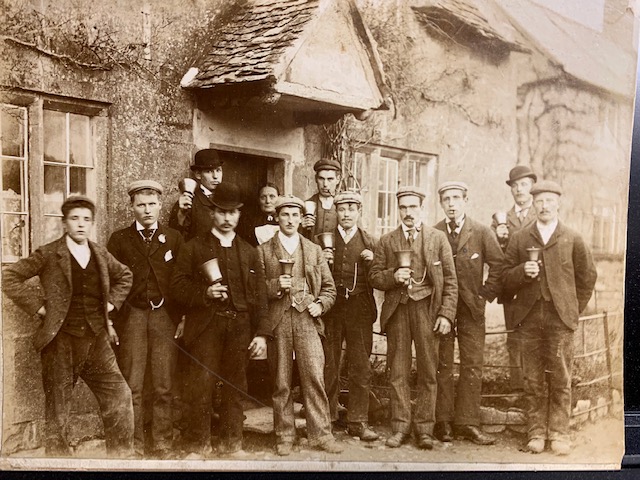
On Tuesday 19th July 2022 St Peter's six bells were rung from 7.30pm to 8.15pm by six of Willersey's local bell ringing band led by the tower captain Robert Chadburn.
This continuous ring was one of two (The second one was on the 31st July 2022.) to mark and thank the Reverend Scott Watts for all that he and Ros have done for Willersey and the surrounding communities
and to wish them well with the next chapter of their lives in Cambridge.
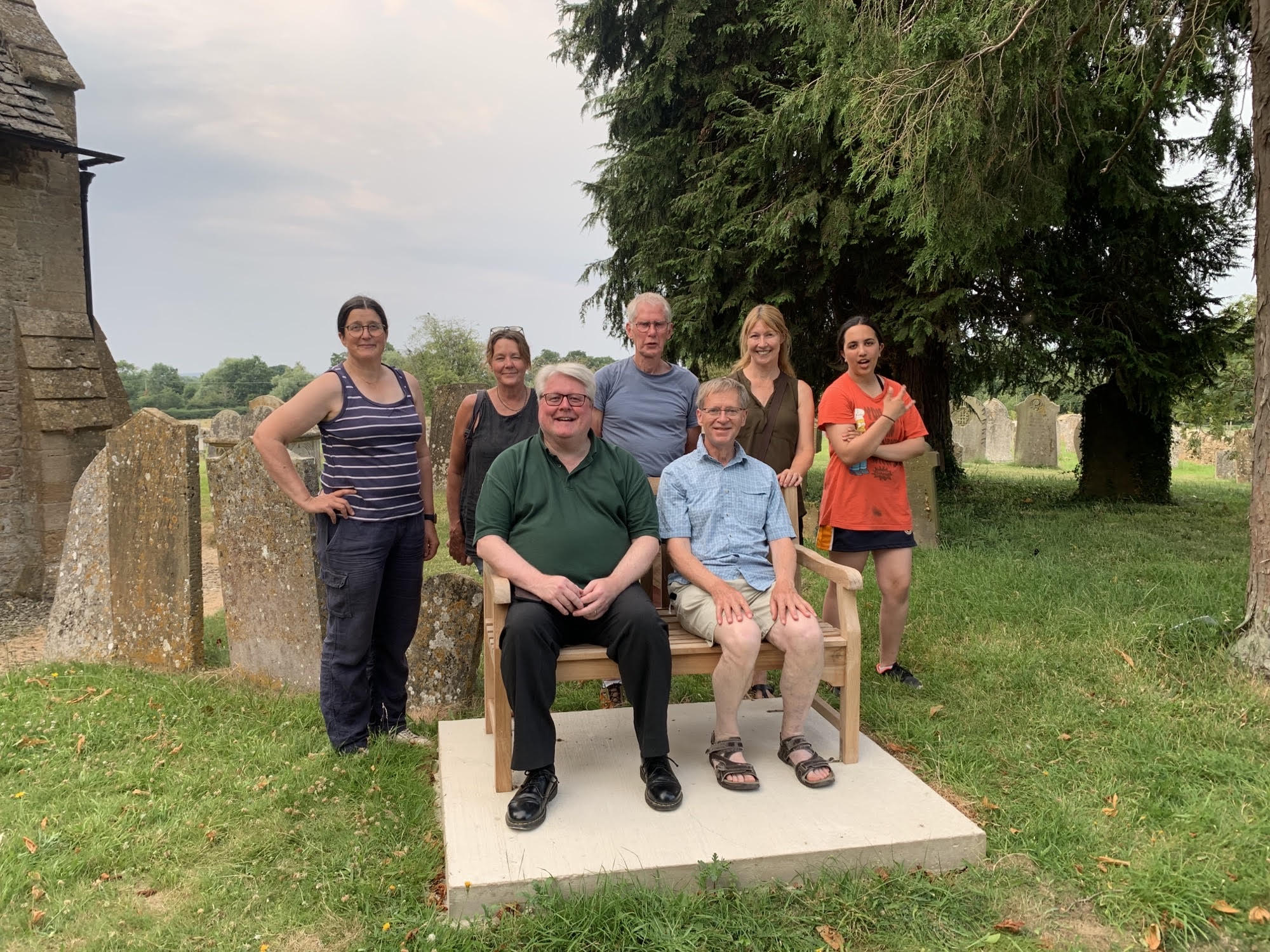
Mediaeval bells still ring out over the Cotswolds and make a wonderful company for there are about 100. In several villages we come acroos the tombs
of the Rudhalls who made Gloucester famous with their foundry and from the 17th to the 19th century supplied nearly 5000 bells still swinging in the belfries of the land. Three churches in Gloucestershire have rare peals at twelve bells, three have ten and over 100 have six.
Handbell ringing during the restrictions throughout the earlier months of the pandemic in 2020 enabled the Willersey Church bell ringers to meet outside and remain active.
It was particularly interesting for some of us to meet up recently with Marie Dow and learn about the Buckle Street Handbell Ringers long history of ringing locally between 1982-2016.
Marie now lives in the village, but along with her husband Robert was a key member of the Buckle Street Handbell Band performing widely during those years at local events, festivals and even in Long Lartin prison.
|
